CPS Unit Number 138-02
Camp: 138
Unit ID: 2
Operating agency: MCC
Opened: 10 1944
Closed: 12 1946
Workers
Total number of workers who worked in this camp: 2
-
 CPS Camp No. 138, subunit 2, Malcolm, Nebraska.Henry Hochstedler cultivating. June 1946.Digital image, Mennonite Community Photographs, 1947-1953: Service. HM4-134 Box 1 Photo 021.1-13. Mennonite Central Committee Photo ArchiveJune 1946.
CPS Camp No. 138, subunit 2, Malcolm, Nebraska.Henry Hochstedler cultivating. June 1946.Digital image, Mennonite Community Photographs, 1947-1953: Service. HM4-134 Box 1 Photo 021.1-13. Mennonite Central Committee Photo ArchiveJune 1946. -
 CPS Camp No. 138, subunit 1, Lincoln, Nebraska.CPS men surveying on a farm near Lincoln.Digital image, Mennonite Community Photographs, 1947-1953: Service. HM4-134 Box 1 Photo 021.1-10. Mennonite Central Committee Photo Archive
CPS Camp No. 138, subunit 1, Lincoln, Nebraska.CPS men surveying on a farm near Lincoln.Digital image, Mennonite Community Photographs, 1947-1953: Service. HM4-134 Box 1 Photo 021.1-10. Mennonite Central Committee Photo Archive -
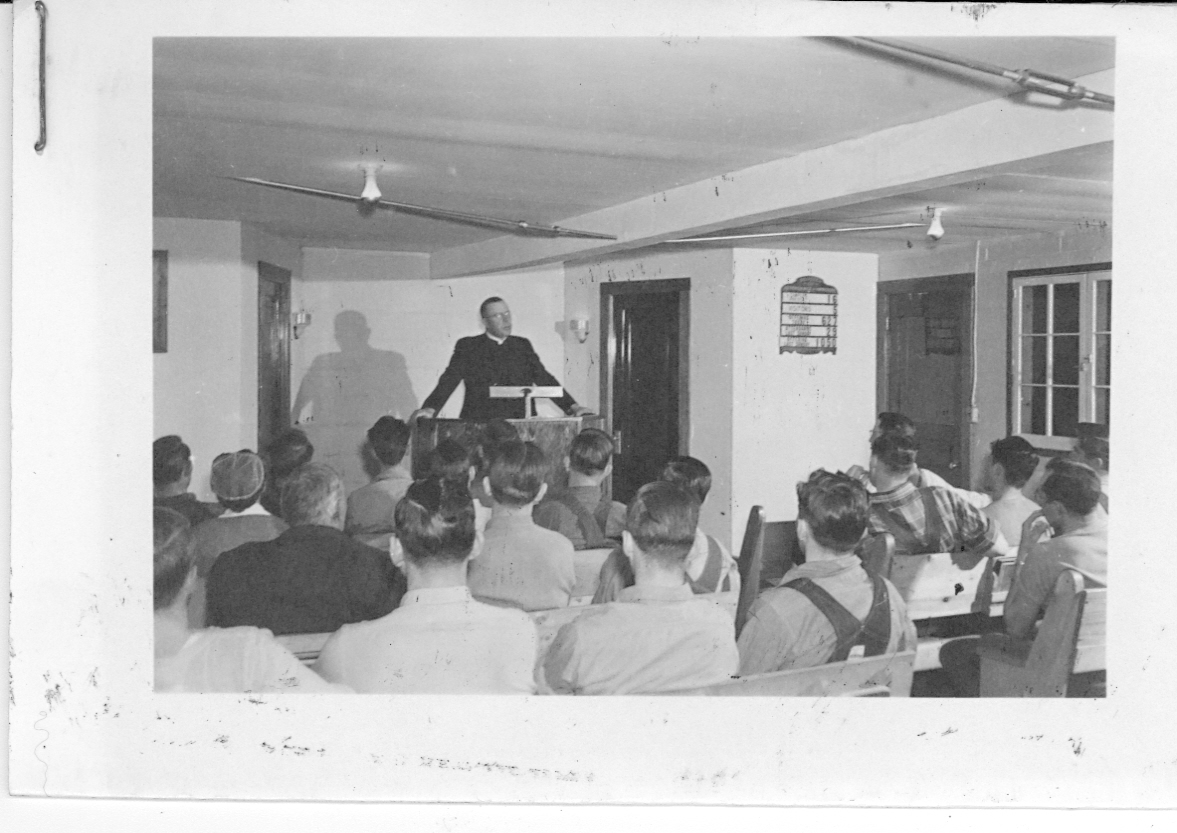 CPS Camp No. 138, subunit 2, Malcolm, Nebraska.Yost from Denver preaching in 1946.Digital image, Mennonite Community Photographs, 1947-1953: Service. HM4-134 Box 1 Photo 021.1-10. Mennonite Central Committee Photo Archive1946
CPS Camp No. 138, subunit 2, Malcolm, Nebraska.Yost from Denver preaching in 1946.Digital image, Mennonite Community Photographs, 1947-1953: Service. HM4-134 Box 1 Photo 021.1-10. Mennonite Central Committee Photo Archive1946 -
 CPS Camp No. 138, subunit 1, Lincoln, Nebraska.View of the camp at Lincoln, May, 1946.Digital image, Mennonite Community Photographs, 1947-1953: Service. HM4-134 Box 1 Photo 021.1-5. Mennonite Central Committee Photo ArchiveMay 1946
CPS Camp No. 138, subunit 1, Lincoln, Nebraska.View of the camp at Lincoln, May, 1946.Digital image, Mennonite Community Photographs, 1947-1953: Service. HM4-134 Box 1 Photo 021.1-5. Mennonite Central Committee Photo ArchiveMay 1946 -
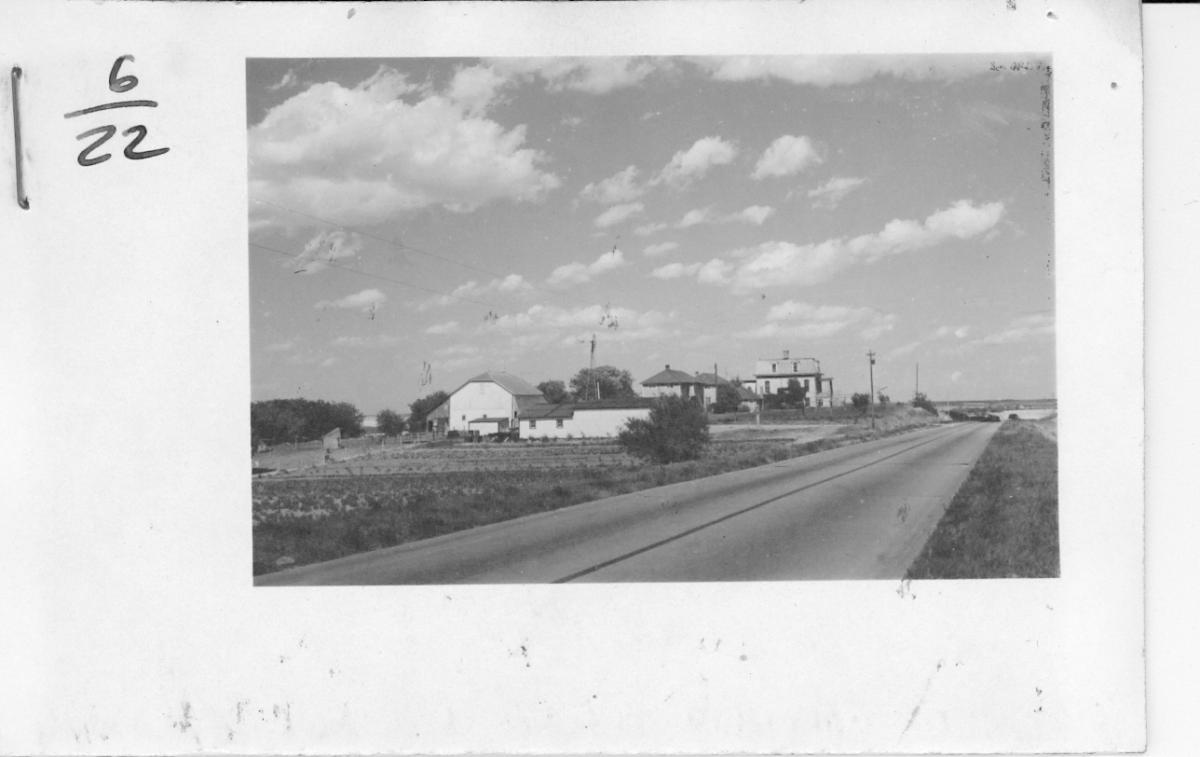 CPS Camp No. 138, subunit 2, Malcolm, Nebraska.View of the camp at Malcolm June, 1946.Digital image, Mennonite Community Photographs, 1947-1953: Service. HM4-134 Box 1 Photo 021.1-5. Mennonite Central Committee Photo ArchiveJune 1946.
CPS Camp No. 138, subunit 2, Malcolm, Nebraska.View of the camp at Malcolm June, 1946.Digital image, Mennonite Community Photographs, 1947-1953: Service. HM4-134 Box 1 Photo 021.1-5. Mennonite Central Committee Photo ArchiveJune 1946. -
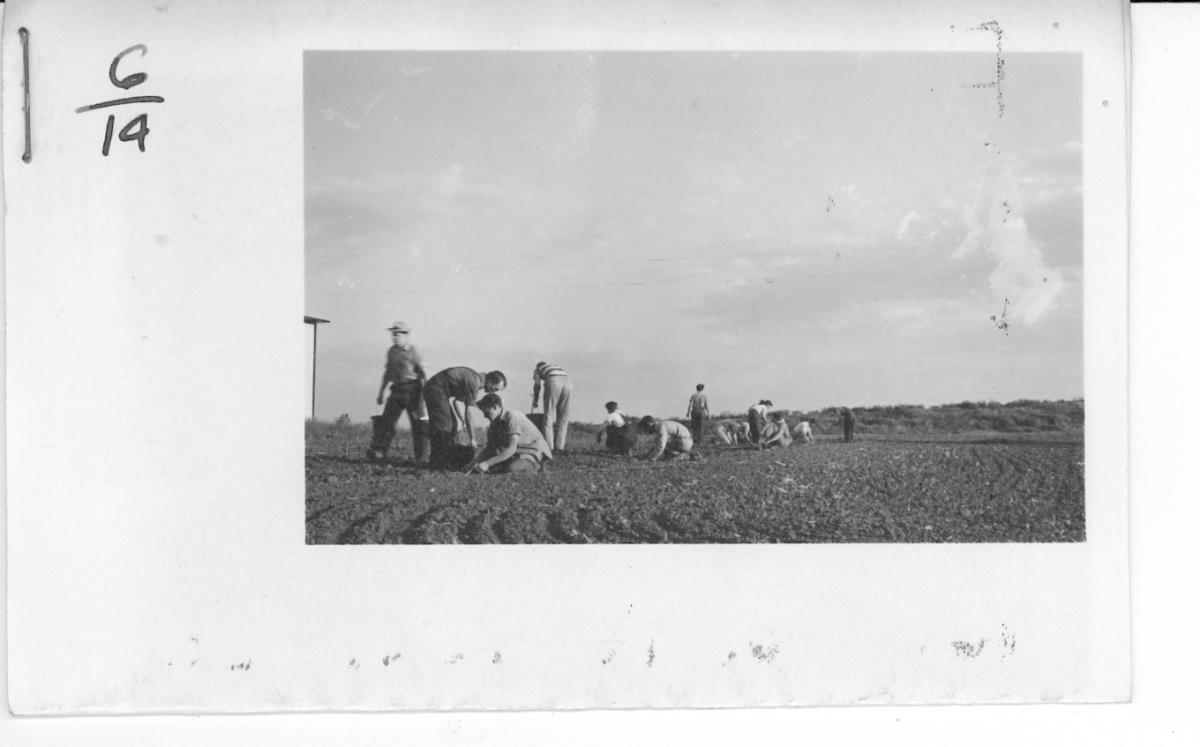 CPS Camp No. 138, subunit 2, Malcolm, Nebraska.1946. Scene at Malcolm Nebraska C.P.S. camp.Mennonite Community Photographs, 1947-1953: Service. HM4-134 Box 1 Photo 021.1-15. Mennonite Central Committee Photo Archive
CPS Camp No. 138, subunit 2, Malcolm, Nebraska.1946. Scene at Malcolm Nebraska C.P.S. camp.Mennonite Community Photographs, 1947-1953: Service. HM4-134 Box 1 Photo 021.1-15. Mennonite Central Committee Photo Archive -
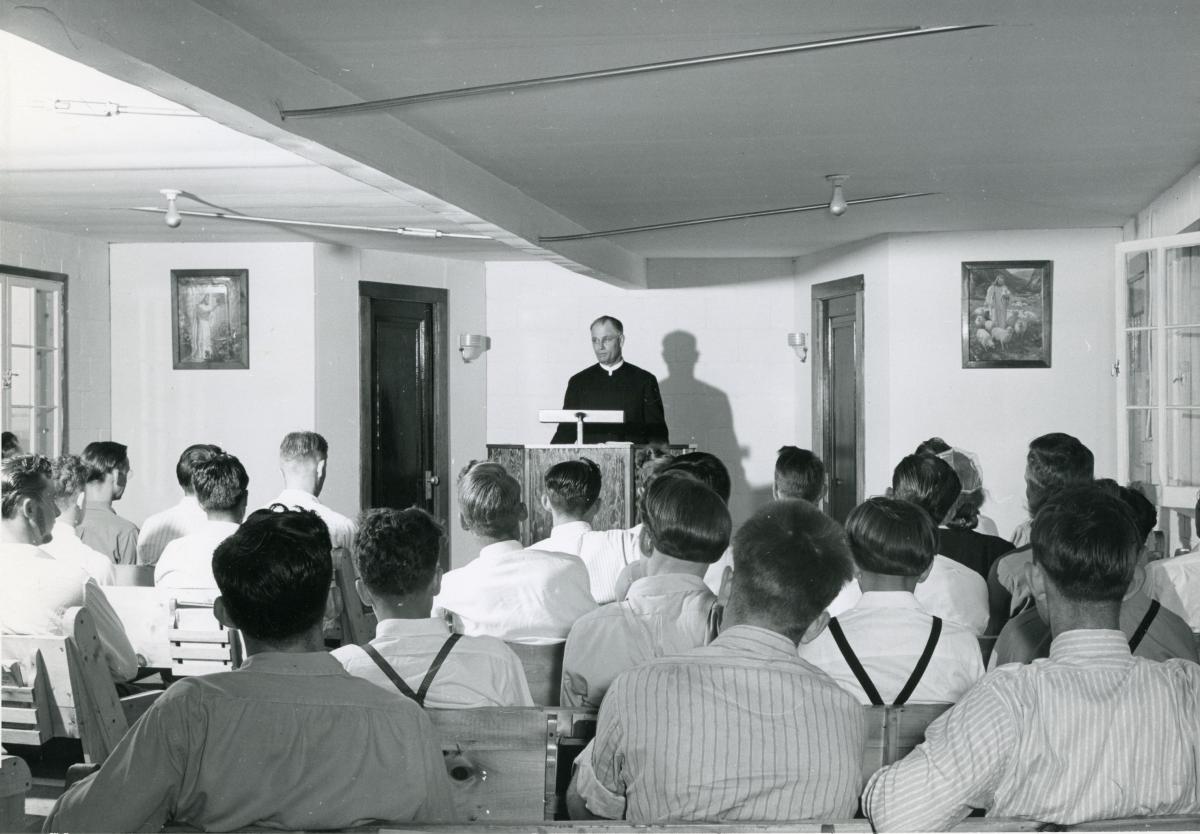 Philemon Frey PreachingPhilemon Frey preaching at a worship service for conscientious objectors, February, 1946, at Civilian Public Service Camp No. 138, Malcolm, Nebraska. Frey was a conscientious objector in World War 1, and was ordained a Mennonite minister at Archbold, Ohio in 1936.Mennonite Central Committee Archival Photo
Philemon Frey PreachingPhilemon Frey preaching at a worship service for conscientious objectors, February, 1946, at Civilian Public Service Camp No. 138, Malcolm, Nebraska. Frey was a conscientious objector in World War 1, and was ordained a Mennonite minister at Archbold, Ohio in 1936.Mennonite Central Committee Archival Photo
-
 June 1946.
June 1946. -
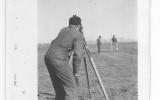
-
 1946
1946 -
 May 1946
May 1946 -
 June 1946.
June 1946. -

-

CPS Camp No. 138 subunit 2 was located on an eighty-acre farm at Malcolm, Nebraska near Lincoln which was purchased by MCC for the Peace Problems Committee of the Mennonite Church. That committee provided strong encouragement to the unit. Men conducted surveys for contour farming, and built terraces and diversion ditches along with other duties. As a result of work in the Farm and Community School, several men became leaders in The Mennonite Community Magazine.
Jacob Mellinger from CPS Camp No. 24, subunit 2 at Hagerstown, Maryland led the committee that purchased an eighty acre farm for the Peace Problems Committee of the Mennonite Church. It was located on top of a ridge ten miles northwest of Lincoln on US Highway No. 34.
Mr. Mellinger remained in Lincoln to prepare the two farm homes for use by subunit 1 and subunit 2. The committee decided to erect barracks on each of the two farms while also reconditioning the farmhouses. Two men came from Medaryville, Indiana CPS Camp No. 28, to assist with the carpentry. Joseph Zimmerman, minister of the Mennonite Church near Milford, Nebraska assisted in the renovation and construction for the Malcolm farm.
Directors: Ralph Hernley, John Lehman, Richard Kulp
Matron-Dieticians: Elizabeth Sieber Hernley, Mrs. Olen Britch
Thirty-five men made up the unit, some of them married.
The men worked to survey land for contour lines, built terraces and diversion ditches, and filled gullies. They also surveyed for the purpose of creating base maps.
At first all thirty-five of the Malcolm men lived in the stone house. As soon as the barracks were finished, sixteen of the men moved to the top floor of the barracks. A second building, designed like the first, finished in late 1944 housed the shop and food storage room in the basement and the dining hall and kitchen on the ground floor. The CPS office and staff apartments completed the rest of the top floor.
The first issue of Mennonite Farmunity published by the men at Malcolm, explained that the Peace Problems Committee wanted to test the model of a smaller unit to learn whether it had value for possible peace-time conscription. Further, that particular group of Mennonites wanted to gain experience with fostering an educational and religious life program “in keeping with the beliefs of this particular branch of the Mennonites”. (in Gingerich p. 184) The publication continued from January 1945 through June 1946.
Guy F. Hershberger, a regular visitor from Goshen College, taught a class on the Mennonite Community, one which planners hoped would also attract wives who had followed their husbands to the Lincoln area. From those studies, several men in the unit helped launch The Mennonite Community Magazine.
Men took other classes on soils and crops, animal husbandry, farm accounting, and welding, among other subjects.
For information on Mennonite camps and units in agriculture, see Melvin Gingerich, Service for Peace: A History of Mennonite Civilian Public Service. Akron, PA: Mennonite Central Committee printed by Herald Press, Scottdale, PA, 1949 pp. 177-212.
For more information on women COs see Rachel Waltner Goossen, Women Against the Good War: Conscientious Objection and Gender on the American Home Front, 1941-47. Chapel Hill, NC: The University of North Carolina Press, 1997.
For general information on the work and life in CPS camps and units, see Albert N. Keim, The CPS Story: An Illustrated History of Civilian Public Service. Intercourse, PA: Good Books 1990.
See also Mulford Q. Sibley and Philip E. Jacob, Conscription of Conscience: The American State and the Conscientious Objector, 1940-47. Ithaca, NY: Cornell University Press, 1952.
Swarthmore College Peace Collection, Camp periodicals database.